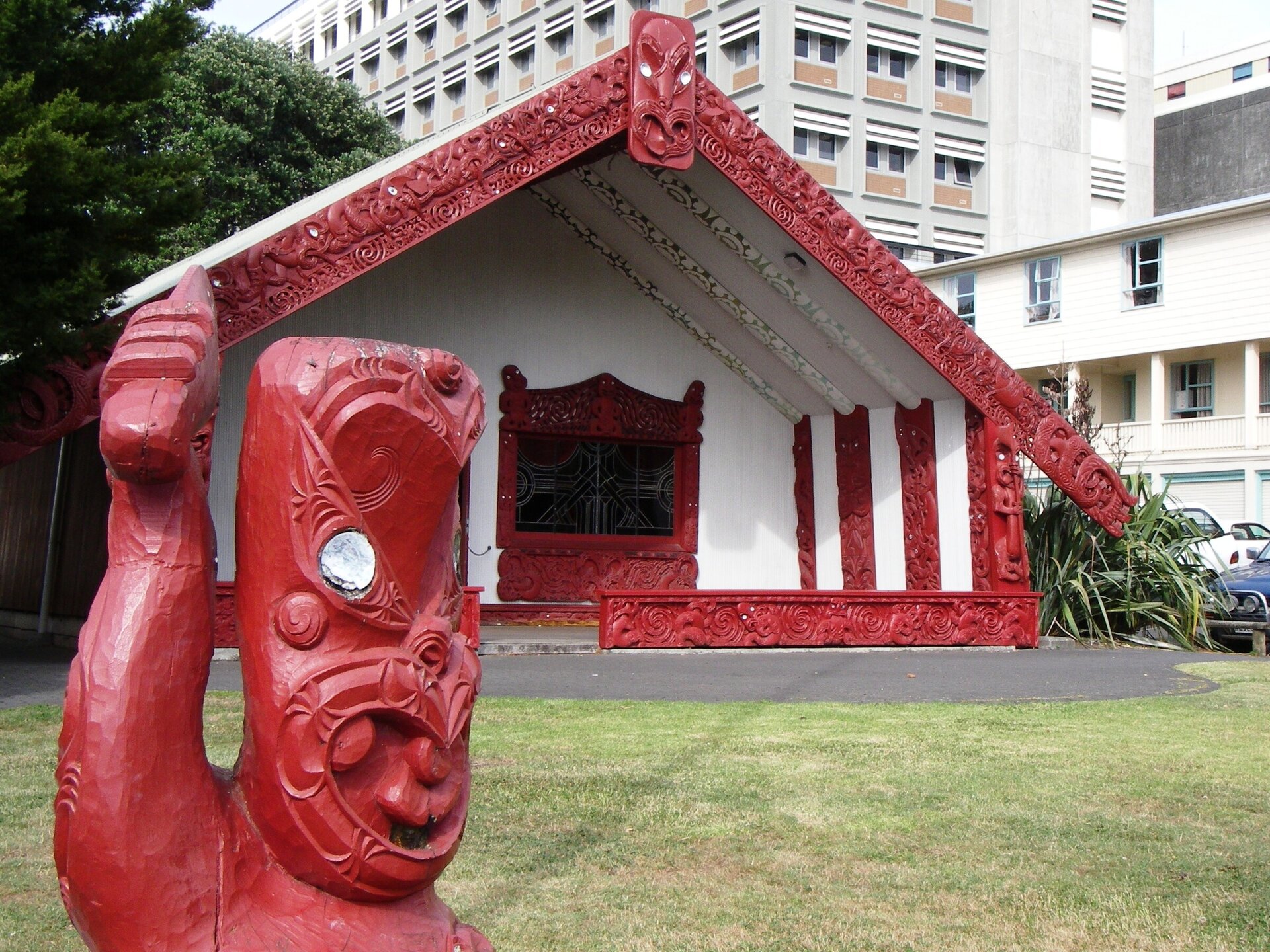Journal articles and other professional publications
Mainly technical, peer-reviewed articles (authored by or completed in collaboration with Dr Gary Garner) - on topics relating to Māori, including biosecurity and Te Tiriti o Waitangi (New Zealand's Treaty of Waitangi), along with the subject of indigeneity more generally. Access linking to full article provided.
The value of fresh water rights in New Zealand - considerations for property valuers and other related professions
Gary Owen Garner
Valuer's Education & Integrity Foundation. · Apr 1, 2020
This paper provides a summary of water rights as they currently exist across New Zealand, the
variability of ownership and interests, and how these rights are being impacted by regulatory control
amongst a raft of various stakeholder claims and involvement. It relates specifically to “fresh” water,
i.e. all water except coastal seawater, and geothermal water.
How an Indigenous community responded to the incursion and spread of myrtle rust (Austropuccinia psidii) that threatens culturally significant plant species – a case study from New Zealand
Amanda Black, Melanie Mark-Shadbolt, Gary Garner, Jenny Green, Tame Malcolm, Alby Marsh, Hone Ropata, Nick Waipara and Waitangi Wood
Pacific Conservation Biology 25(4) 348-354 https://doi.org/10.1071/PC18052. Published: 20 February 2019
The incursion of the myrtle rust disease (Austropuccinia psidii) was officially confirmed on 3 May 2017 at a plant nursery located in Kerikeri, North Island, New Zealand. Since then the presence of myrtle rust has now been located throughout New Zealand, with additional outbreaks in Taranaki, Waikato and Bay of Plenty. It has been detected on a range of Myrtaceaea species including ramarama (Lophomyrtus bullata), pōhutukawa (Metrosideros excelsa), Monkey apple (Syzygium smithii), mānuka (Leptospermum scoparium), and Eucalyptus spp. (E. botryoides). Many of these species are iconic to the Indigenous Māori and have historical significance, being taonga (treasures). Since the incursions, Te Tira Whakamātaki (National Māori Biosecurity Network), have been informing Māori communities throughout New Zealand about the potential impacts of myrtle rust via a series of regional meetings (hui), email and social media that have included brief reports and recommendations. Feedback from these meetings and social media has strongly highlighted the desires of Māori communities to be active participants in decision-making and response plans for the management of myrtle rust as well as other pests and diseases. In this paper, we describe the journey of an Indigenous community approach to a modern biosecurity incursion.
Whakamanahia te mātauranga o te Māori: empowering Māori knowledge to support Aotearoa’s aquatic biological heritage
James Ataria (Rongomaiwahine, Ngāti Kahungunu, Ngāti Raukawa), Melanie Mark-Shadbolt (Ngāti Kahungunu, Ngāti Porou, Te Arawa, Te Ati Awa, Ngāti Raukawa), Aroha Te Pareake Mead (Ngāti Awa, Ngāti Porou), Kevin Prime (Ngāti Hine, Ngāti Whātua, Tainui), Jim Doherty (Ngāti Manawa), James Waiwai (Ngāi Tūhoe, Ngāti Ruapani, Ngāti Awa, Ngāti Kahungunu, Tūhourangi), Tohe Ashby (Ngāti Hine, Ngā Puhi), Simon Lambert (Ngāi Tūhoe, Ngāti Ruapani) & Gary Owen Garner (Ngāti Ranginui).
New Zealand Journal of Marine and Freshwater Research · Oct 31, 2018
As Aotearoa New Zealand grapples with developing solutions to complex issues surrounding its unique freshwater and marine biological heritage, there is a growing recognition that mātauranga Māori can be ‘unlocked’ and used with great effect alongside western science. Examples where appropriate consideration and development of robust methodologies for the application of mātauranga Māori coexisting alongside western science are increasing. Unfortunately, despite the benefits that can be derived from this collaboration, the quality of engagement is not always satisfactory often due to poor interpersonal relationships and misidentification of the knowledge holders. By providing an appropriately historical context, this article is able to consider the critical issues now facing mātauranga and the Māori knowledge holders today, and fundamental requirements that will empower application of this knowledge within bio-heritage management. We consider how the development of a methodology between mātauranga Māori holders and potential end-users might contribute to improved outcomes for Aotearoa’s biological heritage.
The bicultural significance of forests and associated socioeconomic impact of forestry treaty claims in Aotearoa-New Zealand
Gary Owen Garner
22nd Annual Pacific-Rim Real Estate Society Conference, Sunshine Coast, Queensland, Australia · Jan 10, 2016
Problem/Purpose
The economic importance of forestry as a significant industry in Aotearoa is easily demonstrated, contributing billions to New Zealand’s GDP and directly employing of tens of thousands of people. Their importance to Māori is demonstrably even more fundamental whereby a broader set of principles other than those based on individual property rights and economic values are solidly embraced. To Māori, forests are regarded as “taonga” – a “treasure” – and as such are culturally significant assets that are congruent with values emphasising guardianship over ownership, collective and co-operative rights over individualism, obligations towards future generations, and the need to manage resources sustainably.
Design/methodology/approach
This is an observational paper (narrative review) examining the proposition that Māori in contemporary New Zealand are likely to balance economic objectives with social, cultural and spiritual values - even though the embedding of cultural Māori values and principles - especially those relating to environmental protection - are still held to strongly.
Findings
Whilst the proportion of funds relating to forestry settlements under the Treaty of Waitangi underpins the enormity of importance attached to forests, their significance proceeds beyond traditional economic or social measures. Furthermore, the redress amount, or fixed capital sum provided under any Treaty Deed of Settlement agreed to by the Crown tells only part of the story in terms of property settlement and compensation. The more complete picture is that ownership of the land, or part thereof, in addition to accumulated rentals for Crown Licensed Forests has been recovered. In addition, various sites of cultural and spiritual significance located on public conservation land - some of which may contain forest lands – are also included as part of the final redress, thereby further distorting the full compensation amount actually being paid. Notwithstanding, the total compensation package typically represents only a fraction of the current market value of dispossessed land.
Originality/value
This paper provides a cross-disciplinary review of relevant literature on the topic with linkages developed for establishing a theoretical evaluative framework.
Social Implications
Forestry claim settlements and the related Waitangi Tribunal and its legislated processes, though not perfect processes, have nonetheless facilitated a useful mechanism whereby the Crown’s acknowledgement of grievances, formal apology, cultural redress, along with financial and commercial compensation, have gone some way towards recompensing actions and omissions by the Crown since 1840.
Forestry Treaty Claims In Aotearoa-New Zealand: Bicultural Significance And Socio-Economic Impact
Gary Owen Garner
Pacific Rim Property Research Journal Volume 23 Number 1 March 2017
The economic importance of forestry as a significant industry in Aotearoa is easily established; but to Māori it is demonstrably even more fundamental whereby a broader set of principles other than those based on individual property rights and economic values are solidly embraced. Manifestation of such importance is also revealed in forestry claims made under Treaty of Waitangi and related legislated processes facilitating recompensing actions and omissions by the Crown since 1840. However, the redress amount provided under any Treaty Deed of Settlement tells only part of the story in terms of property settlement and compensation. The more complete picture is that land gifting including sites of cultural and spiritual significance, and recovery of accumulated rentals for Crown Licensed Forests may also included as part of the final redress – distorting the apparent compensation amount paid. Notwithstanding, total compensation packages typically represent only a fraction of the current market value of dispossessed land. This is an observational paper establishing a conceptual framework, examining the proposition that contemporary Māori are likely to balance economic objectives with social, cultural and spiritual values – even though the embedding of these principles (especially those relating to environmental protection) are still held to strongly
Indigenous peoples’ attitudes and social acceptability of invasive species control in New Zealand
Amanda Black, Gary Garner, Melanie Mark-Shadbolt, Jovana Balanovic, Edith MacDonald, Ocean Mercier, and Janine Wright
Context. In Aotearoa New Zealand, a significant threat to biodiversity, conservation efforts and Indigenous cultural identity is the unwanted introduction of invasive pests, plants and pathogens. Currently methods to control invasive species in Aotearoa New Zealand, in particular mammalian pests (i.e. possums (Trichosurus vulpecula)) have had decreasing public support. This has likely come about for a number of reasons, including lack of social engagement and concerns over impacts combined with an increasing distrust of top-down initiatives.
Aims and methods. We analysed opinions towards existing and emerging technologies to manage invasive species. Data were obtained from 1015 respondents who identified as Indigenous Maori¯ from a national survey of 8199 respondents. Utilising psychological frameworks to investigate underlying beliefs of social acceptance, we analysed the responses using exploratory and latent class analysis methods to summarise the main perspectives.
Key results. Our results revealed four distinct clusters of viewpoints amongwithin Maori¯ respondents that were explained by known (objective) and subjective scientific knowledge around pest control methods, and Indigenous community wellbeing. We also observed a general neutrality in trust towards science, but more trust in scientists than science institutions.
Conclusions and implications. Understanding the underlying values and viewpoints associated with pest control and including these in developing engagement plans will ensure a responsible process that empowers Maori.¯ This way forward is key to sustain pathways of engagement and positive participation in decision-making.
Access publication (Pacific Conservation Biology)
Download publication (CSIRO)
Access publication (Linclon University)
Access publication (ResearchGate)
Impact of shifting demographics : implications for housing requirements and public policy
Gary Owen Garner and Hoon Han
2nd Australasian Housing Researchers’ Conference, 20–22 June 2007, The University of Queensland, Brisbane. · Apr 16, 2007
Demographic shifts in the Australian population - characterised by several significant changes
- ageing population
- increased life expectancy
- lowering mortality
- reduced household population density
This is concurrent with global trends of continuing urbanization and population aging
This paper looks at the impact on housing requirements of such changes – in particular the composition and location of the “older Australian” (age 65+) population.
Access publication (QUT)
Download presentation (QUT)
Download publication

